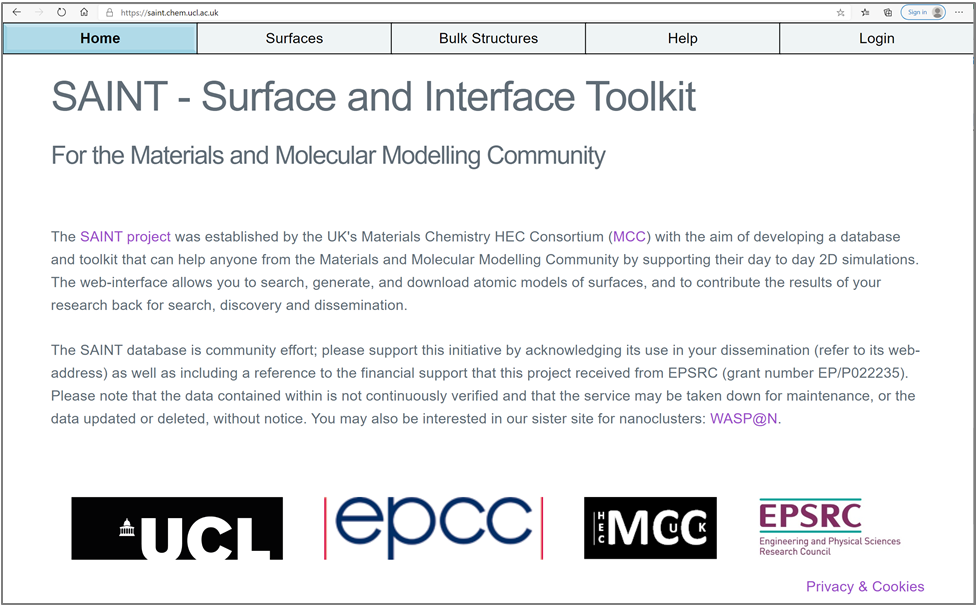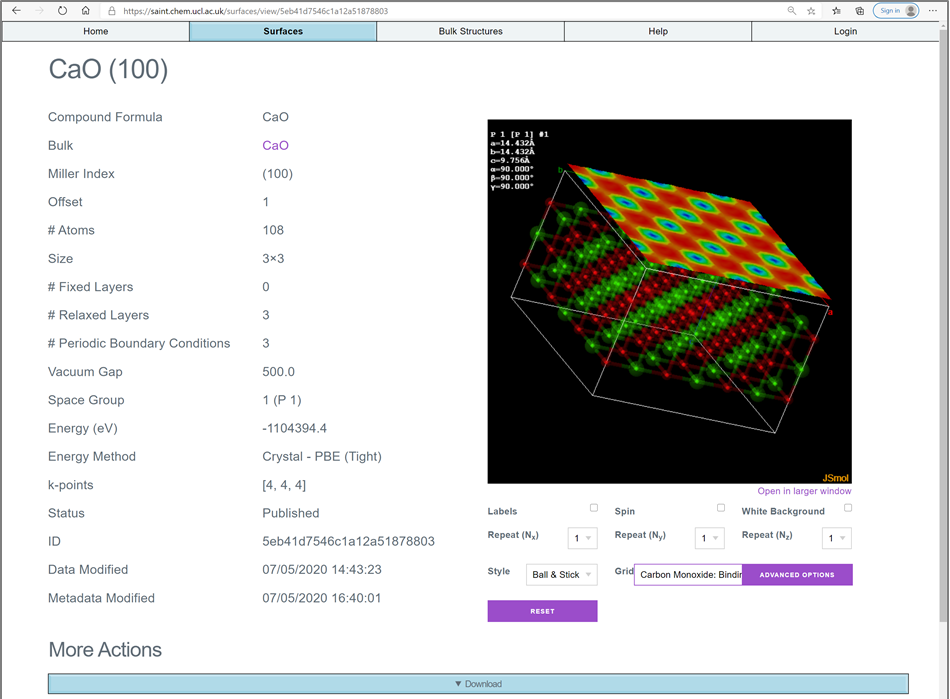 |
SAINTToolkit and Database for atomic structures and reactivity of surfaces |
 |
Webmaster: Prof Scott Woodley |
|
THE SAINT PROJECT |
 |
 |
 |
|
We proposed and obtained funding from EPSRC to develop software that will support advanced and complex surface and interface simulations of materials employed across the fields of energy, catalysis and life sciences. Surfaces and interfaces of materials control important processes, including corrosion, catalysis, electronic and photovoltaic device operation. Surface and interface studies pose greater challenges than the respective bulk investigations, but a wealth of new experimental techniques to interrogate surfaces need now to be fully complemented with tools for their systematic investigation in silico. Mechanistic studies of two-dimensional systems using modern computers have become vastly complex, onerous and often repetitive, where similar tasks or materials or problems are carried out by researchers, often without a simple opportunity to share the primary research or expertise to exploit obtained data to the full potential. With the developments planned we aim to streamline the basic computational research on surfaces and interfaces by expanding the capability of leading simulation software to deal with surfaces and interfaces, and developing and providing data for a new database of surfaces and interfaces - Surface and Interface Toolkit for the Materials Chemistry Community (SAINT Toolkit for the MCC). We have chosen surface reactivity as our first target application, the software infrastructure created in the course of the project, however, will be readily extended to adjacent fields of materials chemistry in the future. The problem of accurate and predictive surface thermochemistry is now coming to the forefront of our research with two main challenges: a) Lack of high quality readily accessible models for excited states in surfaces and interfaces with applications in photocatalysis and energy harvesting materials; reactivity of metallic surfaces; accurate energetics of surface defects, active sites and reactants b) Lack of surface and interface databases that would allow access to results of simulations; quality control and comparison of massive data sets obtained in such simulations; predictive screening of reactants and materials. The key problem of 'how to handle big datasets' relevant to particular catalytic applications, or more general chemical questions calls for the development of an Expert System that will answer questions of the type: c) Which material/surface under what conditions would have a specific physical or chemical property, for example the ability to catalyse a particular reaction? d) How can a surface or interface be modified to promote a particular physical property or reactivity. We aim to: 1. Create an open, web-accessible searchable database to allow deposition of surface structures and properties 2. Couple the database and web frontend to a compute server capable of running surface simulations 3. Create the backend software to automate surface calculations at different levels of theory using diverse computational chemistry/physics codes 4. Create a web frontend controlled toolkit for surface data analysis and intelligent management of both data and calculations run on the backend server with user input 5. Develop an expert system software to assist applied surface and interface investigations 6. Populate the database with initial test case dataset at an ab initio level and a minimum population of basic oxide materials using interatomic potentials 7. Extend the current 3D Poisson solver employed for bulk simulations to 2D case to exclude parasitic image interactions from simulation of surface/interface defects and active sites 8. Implement a combined quantum/classical scheme with periodic boundary conditions for calculations on surface structures stored in the database 9. Implement and showcase for surface and interface applications TD DFT gradients with GGA exchange-correlation functionals and beyond. The software infrastructure created and enhancement to internationally leading software we plan will be readily extended to adjacent fields of materials chemistry and beyond in the future. We will strive to make the new software freely available and open source, and trust it will have general impact in the field of surface and interfacial science and will enhance the efficacy of our communities' exploitation of supercomputers in this key field. To return to the SAINT project homepage click here To access our SAINT web interface click here For details on the investigators of the SAINT project click here |